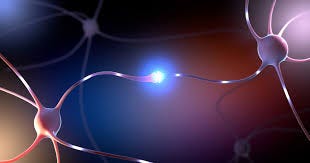No, that doesn’t mean our brains are made of the same stuff as that gallon milk jug. Neuroplasticity is our brains ability to grow new connections, new patterns, new systems. It’s more like rewiring than melting or bending something. Neuroplasticity is literally about changing how we think.
Start the year with the tools to build a Future Ready business, organization, career and community. For a limited time, get 25% off a single or group subscription!
Some of the older-ish of us might have come up with the expectation that our brains basically don’t grow new connections once we’re adults. For over a hundred years, scientists taugh that our brains stop making new core connections once we get into adulthood, and that our personalities, our basic beliefs about ourselves and the world, were basically set in place. Maybe not totally in stone, but in mostly-hardened concrete. From then on, it’s just one long, slow loss of synapses.
By the early 1990s, though, neurobiologists had demonstrated that new connections could be made even in elderly brains - but the older the brain, generally, the more repetition and practice it took. Which meant that it took more effort, more energy.
Which meant that our brains, developed over eons to minimize the demands of that energy hog on the top of our necks, often fight against our ability to change those same brains. We didn’t need to do that to deal with mastodons. But we need to do that now.
Today’s Signals focus on our potential for developing Future Ready minds. If you want to learn more about this topic, check out the book I used, The Mind and the Brain. You’ll find easy links to it on this page.
Book recco: The Mind and the Brain
This is the book that helped me discover my own neuroplasticity - and why my business partner at the time was being driven nuts by me not realizing when I was falling back on the ways that I had learned to do business in a completely different sector. It’s not a beach read, but it helped me understand the brain’s mechanisms and needs in a way that I needed. You can find it (and other good Future Ready reads (or listens) here.
Neuro-what?
https://health.clevelandclinic.org/neuroplasticity
I didn’t know that the Cleveland Clinic had a page on neuroplasticity — would have saved me a lot of effort trying to explain it in the past. I think this is a really good layman’s explanation — and I particularly like the principles of neuroplasticity laid out near the end of the article. You don’t need to have experienced a brain injury to benefit from any of these. I can tell you that when I was trying to move to a new mindset, intensity and repetition made all the difference.
Change Paralysis
https://www.forbes.com/sites/deloitte/2018/11/28/dont-be-paralyzed-by-the-speed-of-change/
I was pleasantly surprised to see this Forbes article take on the question of decision paralysis within an organization’s leadership in a pretty detailed and useful manner. Organizations, obviously are made up of a lot of people with brains, and that same stuggle to break out of the old thinking manifests in groups, sometimes faster than in us as individuals.
As the author points out,
We can’t predict everything that will happen, but we can understand the sustained trajectories that we still ride today and avoid the paralysis that stymies our progress. In doing so, we can build better, more enduring businesses that serve our shareholders, talent, customers, communities and, yes, humanity itself.
I do, however, think that managing change and avoiding paralysis takes more than understanding and avoiding. To be able to avoid, we have to know where we intend to go instead. Neuroplastic thinkers have to develop the skill of critiquing the past and using that critique to create a new alternative. The old trajectories may hold, but they may also reinforce our urge to fall back on the old and familiar.
The Neuroplastic Business
https://www.linkedin.com/pulse/leveraging-neuroplasticity-business-success-approach-ceruto/
This article is pretty lightweight, but its simplicity also allows us to see the level of structural and organizational change that a real effort at leveraging neuroplasticity in a business would require.
Think about it: how would a business that was built around the necessity of managing the stress of its employees as a precondition for success? How would an organization that placed continuous learning at the center of its priorities differ from the lurching corporate machines we have today.
If we completely threw out the business models that we inherited from the Industrial Era — and that we deploy without thinking about it — and created new ways of doing business that treated our people’s neuroplasticity as the central resource….
How would our businesses and organizations be different?
I’d love to hear your thoughts.


